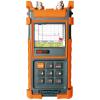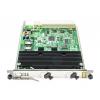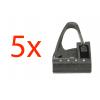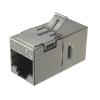-
Kč
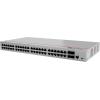

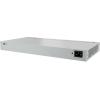

Huawei S310-48T4S è uno switch gestibile della serie eKitEngine. È dotato di 48 porte Ethernet gigabit (10/100/1000 Mb/s) e 4 slot SFP (1 Gb/s). Supporta la gestione Layer 2 e offre anche funzionalità base di Layer 3. Supporta i protocolli Spanning Tree (STP / RSTP / MSTP) e lo standard moderno ERPS (Ethernet Ring Protection Switching). Include la funzione Smart Link, che consente di creare un collegamento di backup. I dispositivi della serie S310 possono essere collegati a più switch di aggregazione tramite molteplici connessioni, garantendo così il funzionamento continuo della rete anche in caso di guasto di un cavo. Il prodotto si distingue per le avanzate misure di sicurezza: protegge da vari tipi di attacchi (come DoS, IP/MAC spoofing e SYN flood), utilizza il DHCP Snooping e memorizza le voci ARP per prevenire attacchi ARP spoofing. Un ulteriore vantaggio è il supporto per iStack – più switch possono essere virtualmente impilati per funzionare come un unico dispositivo. La gestione avviene tramite interfaccia Web UI, CLI o SNMP, con supporto anche per la gestione cloud e tramite l'app Huawei eKit. Lo switch è dotato di alimentatore AC integrato e di raffreddamento attivo con regolazione intelligente della velocità delle ventole. Il modello S310-48T4S è progettato per essere utilizzato come switch principale (core) nelle reti basate su soluzioni eKitEngine. Grazie alla gestione avanzata e alle numerose funzionalità, è adatto anche ad altri scenari d’uso, non solo in combinazione con access point.
Aggiornamento del firmware alla versione R24
La nuova versione del firmware (R24 o successiva) riduce significativamente il tempo di avvio, migliora la regolazione del funzionamento delle ventole e amplia notevolmente le funzionalità di gestione tramite interfaccia Web. Consente la configurazione della maggior parte dei parametri attraverso l’interfaccia grafica, mentre in precedenza molte funzioni erano accessibili solo tramite CLI.
Si consiglia di aggiornare i dispositivi alla versione R24!
Il firmware può essere ottenuto contattando il nostro team di supporto all’indirizzo: support@cdr.pl
48 porte gigabit Ethernet, 4 slot SFP
Lo switch è dotato di 48 porte Ethernet gigabit (10/100/1000 Mb/s) e 4 slot SFP (1 Gb/s). La capacità di switching è di 104 Gb/s, mentre la velocità di inoltro dei pacchetti è di 77 Mpps. Utilizzando uno degli slot SFP, è possibile stabilire una connessione anche su distanze molto lunghe tramite cavo in fibra ottica.

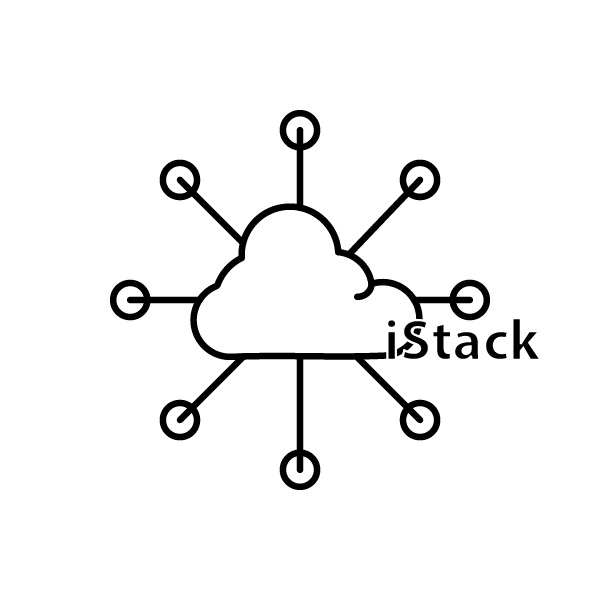
Gestione Layer 2+, iStack
Il dispositivo supporta pienamente la gestione Layer 2 e dispone anche di funzionalità base Layer 3, come il routing statico. Supporta VLAN, multicast (IGMP Snooping, MLD Snooping), funzioni QoS e liste di controllo degli accessi (ACL). È compatibile con i protocolli Spanning Tree (STP / RSTP / MSTP) e con il moderno standard ERPS (Ethernet Ring Protection Switching), definito nella raccomandazione ITU-T G.8032.
Lo switch garantisce le necessarie misure di sicurezza per la rete. Protegge da attacchi DoS come SYN flood, Land, Smurf e ICMP flood. Dispone anche di protezioni contro attacchi mirati agli utenti, come attacchi DHCP server, IP/MAC spoofing, DHCP request flood e DHCP CHADDR.
La serie S310 supporta la funzione iStack, che consente di impilare logicamente più switch in un unico switch virtuale. Questo semplifica la gestione della rete e permette di creare collegamenti di backup aggiuntivi, offrendo protezione contro eventuali guasti.
La gestione avviene tramite interfaccia grafica Web, CLI oppure utilizzando SNMP (v1, v2c, v3) / SSH 2.0. I dispositivi della serie S310 possono essere gestiti anche tramite cloud, con la possibilità di utilizzare l’app Huawei eKit.
Applicazioni
Grazie alle avanzate funzionalità di gestione, lo switch S310-48T4S è perfettamente adatto a fungere da switch principale in diversi tipi di rete. La presenza di 48 porte consente il collegamento di numerosi dispositivi che non richiedono alimentazione PoE. Nelle reti d’ufficio di piccole dimensioni, lo S310-48T4S può essere utilizzato con successo anche come unico switch.
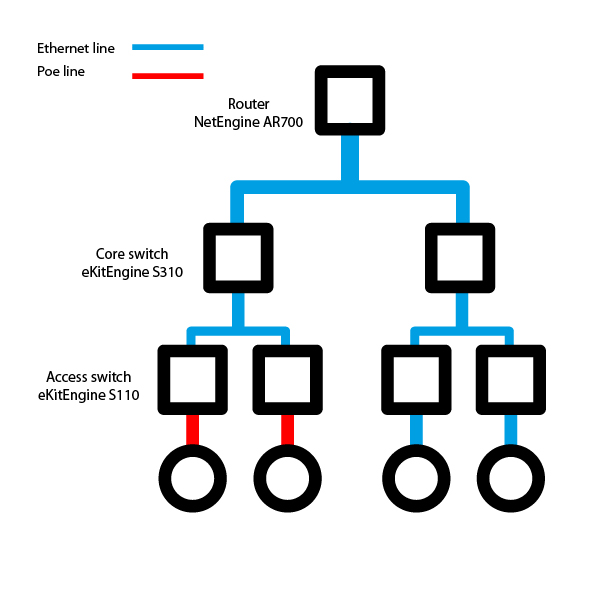
Specifiche
| Huawei S310-48T4S | |
| Capacità di switching | 104 Gb/s |
| Velocità di inoltro dei pacchetti | 77 Mp/s |
| Porte |
48x gigabit Ethernet 10/100/1000 Mb/s 4x SFP (1 Gb/s) |
| Dimensioni | 43.6 mm x 442 mm x 220 mm |
| Altezza | 1U |
| Peso | 3,59 kg |
| Alimentazione | Alimentatore integrato AC |
| Tensione di ingresso nominale | 100 - 240 V AC, 50/60 Hz |
| Intervallo di tensione di ingresso | 90 - 290 V AC, 55/65 Hz |
| Consumo massimo di energia | 44,3 W |
| Rumorosità |
A temperatura normale: 46,6 dB (A) Ad alta temperatura: 54,3 dB (A) |
| Temperatura di esercizio ammessa | Da -5 a 50 gradi C |
| Temperatura di conservazione ammessa | Da -40 a 70 gradi C |
| Umidità relativa ammessa | 5%-95% senza consensa |
| Protezione contro le sovratensioni delle porte di servizio | ±10 kV |
| Protezione contro le sovratensioni della porta di alimentazione | ±6 kV |
| Raffreddamento | Attivo, con regolazione intelligente della velocità delle ventole |
| Funzionalità software | |
|---|---|
| Tavola indirizzi MAC |
MAC automatico address learning / aging Fino a 16K indirizzi MAC Voci degli indirizzi MAC: statiche / dinamiche / blackhole Filtraggio degli indirizzi MAC sorgente Limite degli indirizzi MAC memorizzati per interfaccia |
| VLAN |
4094 VLAN Voice VLAN MUX VLAN Assegnazione VLAN basata su indirizzo MAC, protocollo, sottorete IP, policy e porte VLAN stacking |
| Ethernet switching |
Topologia Smart Link tree e Smart Link multi-instance G.8032 ERPS (Ethernet Ring Protection Switching) STIP (IEEE 802.1d), RSTP (IEEE 802.1w), MSTP (IEEE 802.1s) Protezione BPDU / root / contro i loop Tunnel BPDU |
| Multicast | IGMP v1 / v2 / v3, IGMP v1 / v2 / v3 snooping e MLD snooping |
| Routing IP |
Routing statico e PBR (policy-based routing) Fino a 512 FIBv4 Fino a 512 FIBv6 |
| Caratteristiche IPv6 |
ND (neighbor discovery) PMTU IPv6 ping, IPv6 tracert, IPv6 telnet |
| Stabilità |
LACP (Link Aggregation Control protocol) VRRP (Virtual Router Redundancy Protocol) BFD (Bidirectional Forwarding Detection) LLDP (Link Layer Discovery Protocol) |
| Funzione QoS / controllo d'accesso ACL |
Limitazione del traffico in base alla direzione inbound/outbound su ciascuna porta Inoltro dei pacchetti Two-rate three-color CAR, instradamento del traffico basato sulla porta 8 code per porta Algoritmi di accodamento: DRR, SP e DRR+SP Re-marking delle priorità 802.1p e DSCP sui pacchetti Filtraggio dei pacchetti nei livelli Layer 2 - Layer 4, filtraggio dei frame errati in base a indirizzo MAC sorgente, indirizzo MAC di destinazione, indirizzo IP sorgente, indirizzo IP di destinazione, numero di porta TCP/UDP, tipo di protocollo o VLAN Limitazione della larghezza di banda per ogni coda e modellazione del traffico su ciascuna porta Network slicing (VLAN/VXLAN) |
| Protezioni |
Gestione gerarchica degli utenti e protezione tramite password Protezione contro attacchi DoS, ARP e ICMP Assegnazione di indirizzo IP, indirizzo MAC, ID della porta e ID VLAN Isolamento delle porte, protezione delle porte, MAC sticky Autenticazione IEEE 802.1X e limite del numero di utenti per porta Vari metodi di autenticazione, inclusi AAA, RADIUS, HWTACACS e NAC SSH v2.0 HTTPS Protezione della CPU Whitelist e blacklist Client DHCP, DHCP relay, server DHCP, DHCP snooping Client DHCPv6, DHCPv6 relay |
| Gestione e manutenzione della rete |
iStack Gestione cloud basata su NETCONF/YANG VCT (Virtual cable test) Gestione e manutenzione remota della rete tramite Telnet SNMP v1/v2/v3 RMON Gestione tramite Web HTTPS LLDP/LLDP-MED Log del sistema ed allarmi IEEE 802.3az EEE (Energy Efficent Ethernet) Port mirroring Espansione della rete tramite Registration Query Center |
| Interoperabilità |
VBST Collaborazione con PVST, PVST+ i RPVST |






 Polski
Polski English
English Italiano
Italiano Español
Español Čeština
Čeština Српски
Српски Deutsch
Deutsch Ελληνικά
Ελληνικά Slovenský
Slovenský

